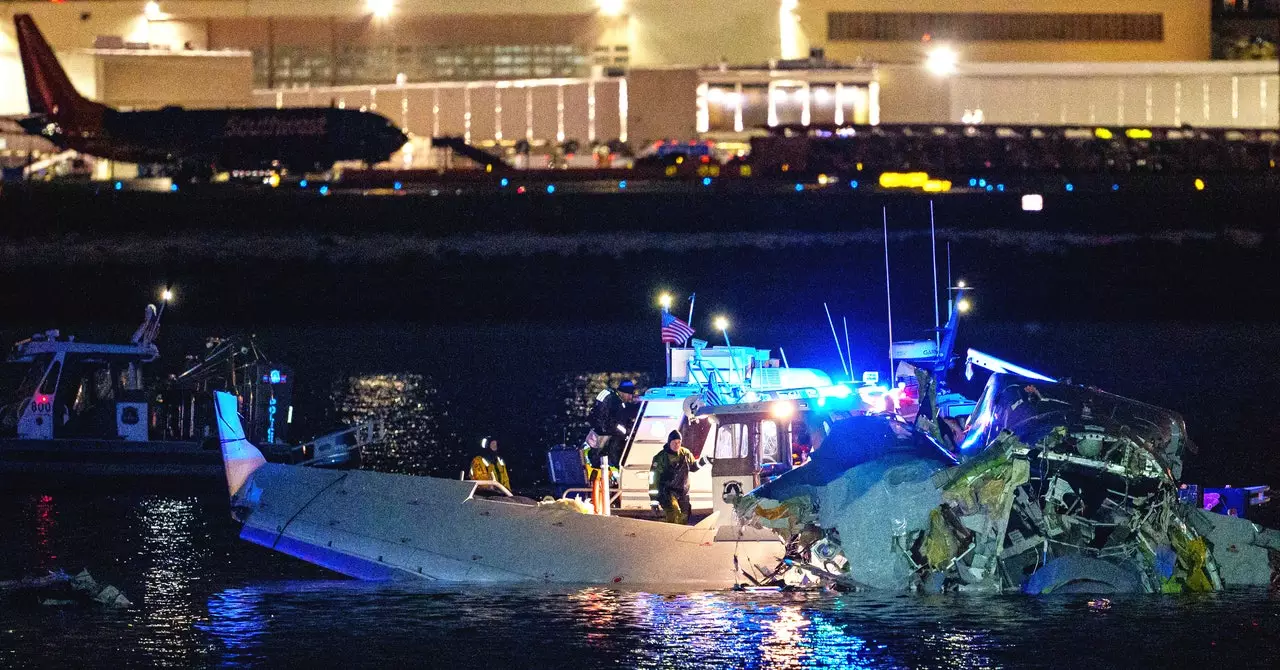On a fateful Wednesday evening, an unprecedented aviation disaster unfolded in Washington, D.C., marking the first significant U.S. air crash in over a decade and a half. A military UH-60 Black Hawk helicopter collided with a Bombardier CRJ-700 passenger airplane, resulting in a catastrophic plunge into the icy Potomac River. As investigators sift through the wreckage and gather testimonies, early indications suggest that human error may have played a pivotal role in this tragedy. Compounding this situation are broader systemic issues concerning the shortage of air traffic controllers and pilots, coupled with the challenges of coordinating military and civilian aviation.
The Black Hawk helicopter, reportedly carrying three soldiers, struck the tail of the passenger aircraft just under a mile from its landing at Reagan National Airport. The violent impact sent flaming debris spiraling into the river, raising urgent questions about air traffic protocols and the state of aviation safety in the United States. With 64 individuals onboard the passenger jet, the recovery operation is ongoing, and authorities have confirmed the retrieval of 27 bodies thus far. Such tragic events underscore the often unseen drama of air travel, where safety protocols are expected to operate flawlessly amidst immense complexity.
Human Error: The Key Contributor?
It is well-documented that human error is a significant factor in aviation incidents, accounting for approximately 80% of accidents worldwide. This reality cannot be overlooked as analysts examine the factors leading to this collision. Marco Chan, a former pilot turned academic, highlights the potential lapses in safety protocols and human factors that might have contributed to this crash. He emphasizes the pressing need for a thorough investigation to ascertain the mindset and actions of those involved in the operation of both aircraft.
After the pandemic-induced slump in air travel, the sector has witnessed a surge in passenger numbers, but a critical workforce shortage remains. This disparity can have dire implications for aviation safety. The current staffing challenges within the industry may create an environment where oversights become more likely, compromising the complex interactions between military and civilian aviation—an area that requires meticulous coordination.
Initial reports indicate that the communication between air traffic control and the aircraft involved might have been problematic. While air traffic control advised the Black Hawk of the need to yield to the passenger jet, it remains unclear whether the pilot fully acknowledged this directive. Additionally, the air traffic control facility had requested a change in landing runways for the American Airlines flight, further complicating the communication landscape.
Retired Air Force Brigadier General John Teichert posits that the adjustment in flight paths shouldn’t have been unexpected by the helicopter crew. This raises the possibility of a communication breakdown exacerbated by different radio frequencies for military and commercial flights. If the transmission was jammed or if the Black Hawk did not receive critical instructions, it could lead to catastrophic misunderstandings, as occurred in this unfortunate scenario.
This tragic incident serves as a stark reminder of the ongoing challenges faced by the aviation industry. As investigations continue, it is essential to consider systemic reforms to improve safety protocols and communication strategies between military and civilian aviation sectors. Regulatory bodies must also prioritize addressing the workforce shortages that currently pose a significant risk to flight safety.
Stronger training programs for pilots and air traffic controllers can reinforce adherence to safety protocols, ensuring that all personnel can effectively communicate under pressure. Additionally, adopting advanced simulation technologies could allow for better preparedness in handling complex and dynamic flight scenarios.
The collision between the military helicopter and passenger aircraft is a multifaceted tragedy underscored by human error, flawed communication, and systemic inadequacies. As the investigation unfolds, it is imperative for regulatory authorities and the aviation industry as a whole to heed the lessons learned from this disaster, striving for a future where such incidents can be prevented and air travel remains a safe mode of transportation for all.

